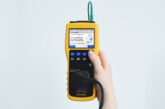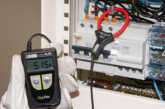
Paul Daniels of Acutest takes this opportunity to clear up some common myths related to PAT testing.
MYTH: PAT testing is a legal requirement.
FALSE: PAT testing in itself is not a legal requirement, however In-Service Inspection & Testing (to give its proper title) is the best way to meet the requirements of The Electricity at Works Regulations – “As may be necessary to prevent danger, all systems shall be maintained so as to prevent, so far as is reasonably practicable, such danger”.
MYTH: PAT testing can be carried out by a competent person.
TRUE: By competence we mean possession of sufficient technical knowledge or experience to be capable of ensuring that injury is prevented.
MYTH: PAT testing should be carried out by an electrically qualified person.
FALSE: It is not necessary to have the inspection and testing carried out by an electrically qualified person – the work can be carried out by a competent person (see above) who has the technical knowledge to perform the tasks correctly and safely. However, having an electrically qualified person will certainly be an advantage when it comes to the repair of electrical equipment. Technical knowledge can be gained by completion of the City & Guilds 2377-22 course in Electrical Equipment Maintenance and Testing. Acutest is able to provide such a course either at the Newcastle-under-Lyme or Atcham Training Centre, or at the customer’s premises.
MYTH: An appliance should be labelled if it has been PAT tested.
TRUE: Though not a legal requirement under the Electricity at Work Regulations, the labelling of appliances is deemed to be ‘good practice’ to show to all that the appliance has been tested satisfactorily and passed as safe. As such the label should indicate the safety status (Pass/Fail) and the date of the test – please note the IET Code of Practice states that the date for re-testing should NOT be marked on the label but recorded on the appliance test record.
If PAT testing has been carried out…
MYTH: PAT testing records should be held for an appliance.
TRUE: It is ‘good practice’ to keep records of inspection and testing, whether they are paper records or electronic, they should be kept for the working life of the appliance. The records enable an informed decision to be taken on the frequencies for inspection and testing: but more importantly the records show that the inspection and testing has actually been carried out.
MYTH: There is guidance from the Health & Safety and IET on how to PAT test.
TRUE: The ‘go to’ document is the IET (Institution of Engineering and Technology) Code of Practice for In-service Inspection and Testing of Electrical Equipment (4th Edition). This comprehensive, well laid out work covers the inspection and testing as well as its administration. The Health & Safety Executive website (hse.gov.uk) is another good source of information on the subject, most of which is free to download, for example Maintaining Portable Electrical Equipment (HSG107 – 3rd Edition).
MYTH: Electrical appliances should be PAT tested every 12 months.
FALSE: The IET Code of Practice (CoP) recommends that a risk-based assessment be carried out on each appliance. Factors such as the environment, the user, the equipment construction (class), equipment type, frequency of use, type of installation method, and finally… previous records should all be taken into consideration to arrive at an informed decision as to the frequency of inspections and tests. Table 7.1 in the CoP gives guidance on the initial frequencies of inspection and testing – in some challenging situations the electrical test may be conducted every three months while at the other end of the scale (Class II equipment situated in offices or shops, for instance) an electrical test may not be required.
MYTH: An appliance which does not pass the visual inspection cannot be used until it has been electrically tested.
TRUE: Failure to pass the visual inspection will require the equipment to be removed from service and an assessment made as to its suitability for its use in that particular location; this may result in it being sent for repair or disposal. After repair the equipment is again visually inspected then electrically tested and put back into service if all is correct. If it is the latter then replacement by a more suitable type must be considered.
MYTH: Most faults on an appliance are found by a  visual inspection.
visual inspection.
TRUE: Absolutely. There are actually two visual inspections: a user check (carried out by the person most familiar with its operation) and a formal visual inspection.
The CoP describes the ‘user check’ as “a vital safety precaution” during which the user carries out an external inspection without dismantling any of the equipment e.g. plug top and covers. Only if there is a problem does the fact need to be recorded. A ‘formal visual inspection’ comprises the ‘user check’ plus an internal examination of the plug: the result of the formal inspection is recorded.








